Production 2004–present Rake, trail 24°, 4.0 in (100 mm) Wheelbase 138.9 cm | Transmission 6-speed Seat height 83 cm | |
 | ||
Manufacturer Kawasaki Heavy Industries Motorcycle & Engine | ||
2015 kawasaki ninja zx 10r first ride
The Kawasaki Ninja ZX-10R is a motorcycle in the Ninja sport bike series from the Japanese manufacturer Kawasaki, the successor to the Ninja ZX-9R. It was originally released in 2004 with minor revisions in 2005. It combines an ultra-narrow chassis, low weight, and radial brakes. In 2004 and 2005 the ZX-10R won Best Superbike from Cycle World magazine, and the international Masterbike competition.
Contents
- 2015 kawasaki ninja zx 10r first ride
- 2015 kawasaki ninja zx 10r superbike smackdown x part 5 motousa
- Engine
- Cooling system
- Clutch
- Wheels
- 20042005
- 20062007
- 2008
- 2009
- 2010
- 20112015
- 2016
- 2017
- References
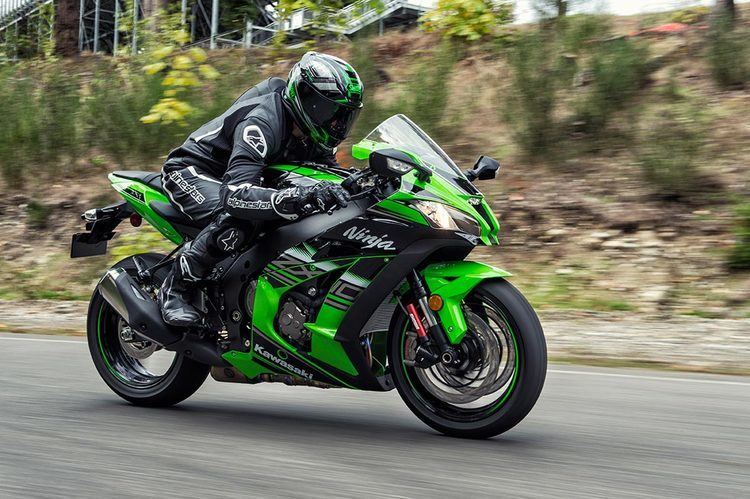
2015 kawasaki ninja zx 10r superbike smackdown x part 5 motousa
Engine
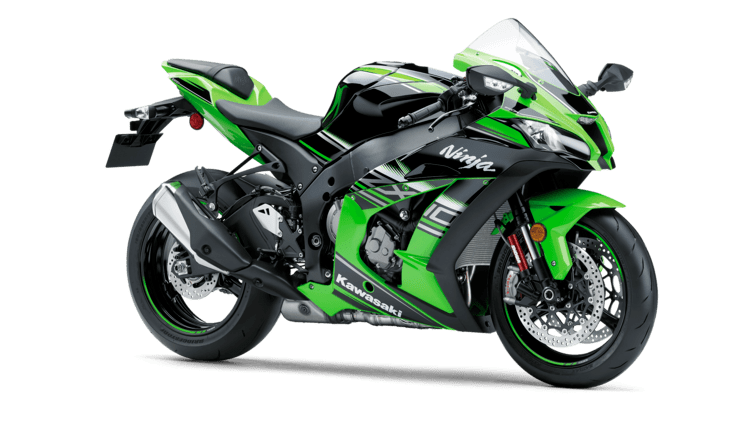
Kawasaki engineers used a stacked design for a liquid-cooled, 998 cc (60.9 cu in) inline four-cylinder engine. The crankshaft axis, input shaft and output shaft of the Ninja ZX-10R engine are positioned in a triangular layout to reduce engine length, while the high-speed generator is placed behind the cylinder bank to reduce engine width. With a bore and stroke of 76 mm × 55 mm (3.0 in × 2.2 in), the ZX-10R engine's one-piece cylinder and crankcase assembly reduces weight and increases rigidity. The DOHC are machined from chromoly steel built for strength, four valves per cylinder improve high-rpm breathing, and the forged, lightweight pistons offer high heat resistance to further enhance the bike's power-to-weight ratio.
Cooling system
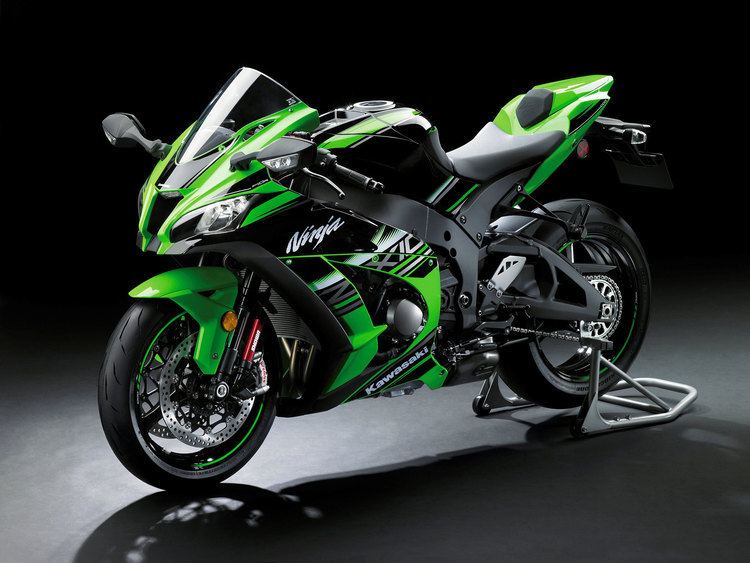
In addition to liquid cooling, the ZX-10R engine has an oil cooler adjacent to the oil filter to reduce oil temperatures. Slosh analysis was also used to design the internal structure of the oil pan, thereby reducing windage losses and helping to maintain low oil temperatures.
Clutch
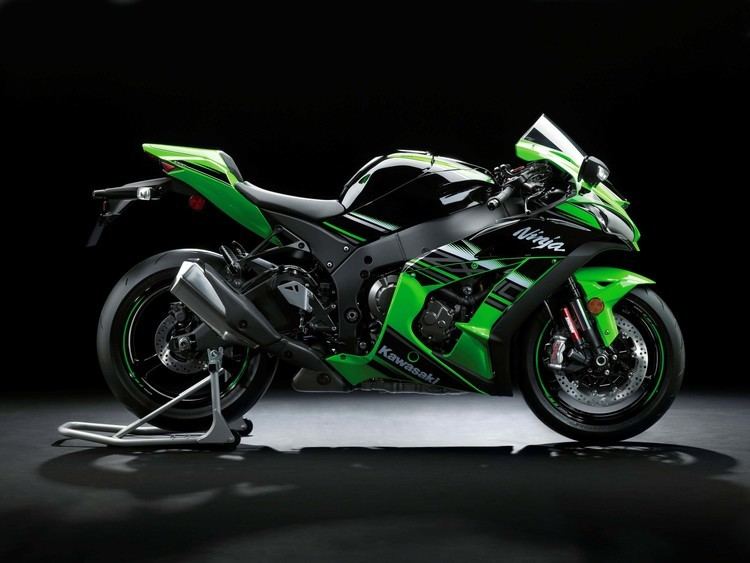
A multi-plate wet slipper clutch transfers power to a six-speed, close-ratio transmission ideal for closed-course competition. The back-torque limiter automatically disengages the clutch (partially) under hard downshifting at high engine speeds to prevent rear wheel hop during corner entry.
Wheels
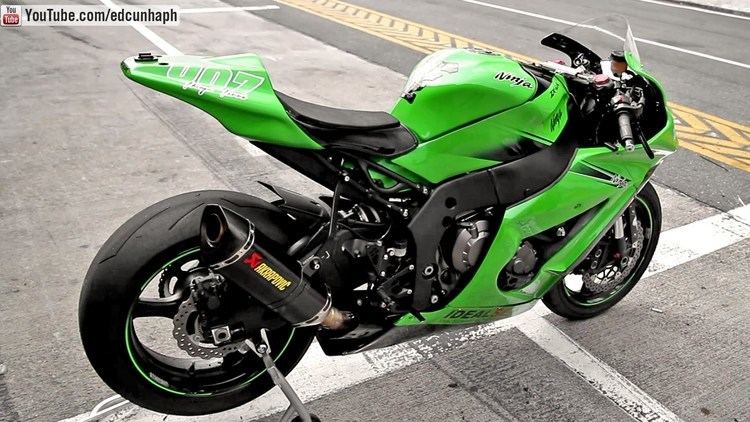
A new six spoke wheel design is claimed to be almost as light as special purpose race wheels. Since the 2006 model the sidewall profile of the rear tire has been increased from 190/50/ZR17 to 190/55/ZR17.
2004–2005
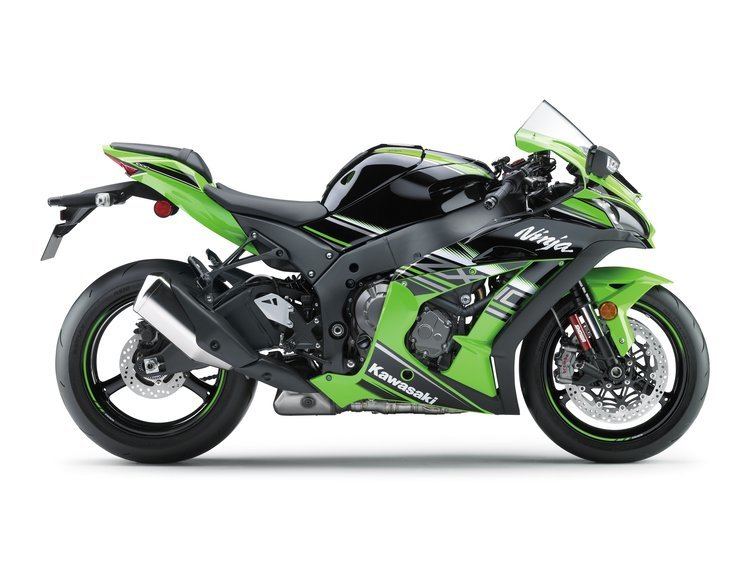
The 2004 model was the debut of the Ninja ZX-10R. It was compact with a short wheelbase and a high power-to-weight ratio, which helped the handling. The exhaust system was fully titanium with single muffler.
2006–2007
Among other changes, the 2006 model had twin underseat exhausts which contributed to a 5 kg (11 lb) increase in dry weight. The engine remained largely unchanged.
The 2006 ZX1000D6F model carried over to the 2007 model year, with only color scheme changes. The most noticeable difference between 2006 and 2007 is that the heat-shields on the exhaust pipes are black on the 2007 ZX10R, and 2006 came with silver ones.
2008
The ZX-10R was all new for its launch for the 2008 model year. There was a dramatic change in appearance with the bike with a much more angular front end. Kawasaki moved away from the twin underseat exhausts of the 2006–2007 model to a more conventional single side exhaust. The compression ratio of the engine was raised.
2009
The 2009 model received only slight changes from the 2008 model: Five spoke wheels became six spoke and a slightly smaller screen was fitted
2010
The 2010 model received slight changes from the 2009 model, including, upgraded Öhlins steering damper, upgraded transmission, and revised bodywork.
2011–2015
The 2011 ZX-10R underwent major overhaul both mechanically and visually. Most notably, Kawasaki introduced their Sport Kawasaki Traction Control (S-KTRC) system as standard. It predicts when traction will be lost and adapts accordingly. Also new are an ABS option called Kawasaki Intelligent Braking System (KIBS), a completely new design, adjustable foot-pegs, larger throttle bodies, a horizontal rear suspension, lighter three-spoke wheels, Showa Big Piston Fork (BPF) front suspension, and an LCD panel dashboard. The 2012 model is identical to the 2011 with the only exception being the slightly different paint schemes offered. In 2013 the models went under another small revision where the colors offered changed again and the front dampener was replaced with an Ohlins electronic front steering dampener. In 2014 the only changes were different colors. In 2015 the only color offered was black, alongside a 30th anniversary edition (in EU, a green color is also offered).
Tom Sykes in 2013 became the first Superbike World Champion for Kawasaki since Scott Russell and the first on a ZX-10R. Stuart Easton won the 2014 Macau Grand Prix. Jonathan Rea won the 2015 Superbike World Championship season. Jeremy Toye holds the Heavyweight (Open) lap record at the Pikes Peak International Hill Climb.
2016
The 2016 ZX-10R received a major update. With a claimed 210 hp with ram-air intake at 13,000 rpm. The electronics now use a Bosch five-axis Internal Measurement Unit (IMU). A sixth degree is calculated by proprietary Kawasaki software. The S-KTRC updated with a added launch control mode a quickshifter and engine brake control. Also optional smarter KIBS cornering ABS. Because of its predictive as opposed to reactive nature, Kawasaki touts this system of S-KTRC as the most advanced of all current traction control systems. Some of the changes mechanically that are now lighter are the slipper clutch, balancer,crankshaft as well as pistons. A less restrictive air filter and larger air box as well as a lighter less restrictive exhaust system. A new transmission that is cassette style is vertically stacked. The previous petal rotors that have been in use since 2004 are now replaced with circular rotors. They are now also larger from 310 mm (12.2 in) to now 330 mm (13.0 in). The calipers are now Brembo M50 Monoblock and the master cylinder is a radial Brembo. The brake lines are now braided stainless-steel. A first for production sport bikes a 43 mm Showa Balance Free Fork derived from WSBK. Kawasaki also offers Race Kit parts for chassis and engine.
2017
Kawasaki releases a homologation special the ZX-10RR with modified cylinder head, race kit parts can be ordered such as high lift cams, DLC coated valve train, a beefed up crank cases, Marchesini seven-spoke rims, also a bi-directional quickshifter, and a single seat this model will be a limited run of 500 units.
